Introducing: The Oral Thermometer
While taking your temperature with an oral thermometer may seem easy, it isn’t as straightforward as it looks. Simply sticking a thermometer into a person’s mouth might not give you accurate results you want, because different areas in the mouth give off varying levels of heat.
Exploring the idea behind the oral thermometer, its misconceptions and the proper procedure can help you to accurately determine whether your child or patient has a fever. Luckily, the right procedure is easy to do and doesn’t take any extra tools or materials apart from your thermometer.
Properly Using Your Oral Thermometer
Described below are the proper steps in taking an oral temperature reading. The steps are in bold, and additional information on what can go wrong follows after.
- Do not drink or eat 15 minutes prior to taking a temperature reading. As mentioned before, food and drinks change oral temperature significantly, thus affecting accuracy.
- Do not breathe heavily through the mouth prior to taking temperature. Breathing through the mouth may lower the temperature of the mouth tissue, resulting in inaccurate readings.
- Position the thermometer in the correct area, as close to the center as possible, under the tongue. The areas of the lower jaw next to the lower molars are heat pockets. Sticking the sensor or probe into this area is essential to getting the closest oral temp measurement.
- Ensure there is no air left in the mouth while keeping the thermometer in place. Air in the mouth will cause temperature differences in the mouth tissue, making readings inaccurate.
- Wait at least 20 seconds even if the thermometer indicates it is already ready. You may also measure twice. The metal probe or sensor’s temperature will first cool down the mouth tissue, so the tissue will need more time to go back up to body temperature.
- Add several tenths of degrees to the temperature. When on a threshold of a fever, it is better to confirm the temperature by doing a rectal measurement just to be sure.
Understanding the things that can go wrong when using an oral thermometer is essential in getting the closest possible reading. You can take more than two readings to ensure that you get an average measurement of the oral temperature.
The difference between rectal and oral thermometers explained
You’ve seen it in cartoons or movies; Mickey Mouse with a thermometer sticking out of his mouth and an ice bag on his head. Using an oral thermometer is the most common way of measuring body temperature. It is more convenient compared to rectal measurements, though the latter is may be closer to your core thermometer. The idea is to insert the thermometer sensor or probe into the mouth, wait for a minute and get the exact temp reading.
Misconceptions
Body temperature is the same throughout, regardless of the body part being measured.
False. Physicians advise not to measure a young child’s temperature orally, since there are external factors that drastically affect the readings. For instance, children develop higher temperatures with activities milder than exercise, such as playing. Rectal temperature measurements are most accurate for young children. Furthermore, there are significant differences in temperature reading in different key areas of the body. Rectal temps can be 7 °F (3°C) higher than oral temps, while tympanic measurements can be 5.5 °F (2.5°C) higher than oral.
Taking oral temperatures requires simply sticking the thermometer in the mouth and taking a reading after a minute.
False. The thermometer sensor has to be in a specific area and requires specific conditions to result in accurate readings. While oral, rectal, gut and core body temperatures can slightly differ, they are well-correlated and oral temperature is lowest of the four. Furthermore, oral temperature is the most influenced by outside factors like drinking, chewing, smoking and breathing through the mouth. Intake of cold drinks and food will lower oral temps, while hot counterparts do the opposite.
Body temperature is constant, all day long.
False. While keeping temperature constant is part of what keeps humans at optimum operating temperature, no human always has the exact same body temperature throughout the day. Temperatures rise and fall regularly, helping to control a person’s circadian rhythm.
Inaccurate readings are due only because of low quality thermometers.
This is only 30% true. It is likely that the readings are off because the procedure is wrong. Make sure you are buying a quality thermometer.
What would you get? Check our Oral Thermometers here.
Also available on Amazon.


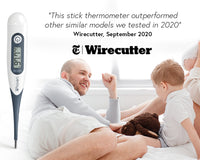
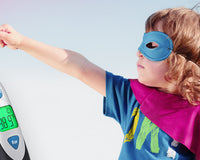

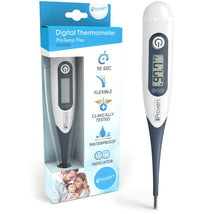
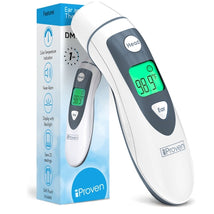

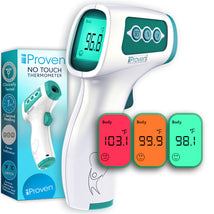
![iProven DMT-77 No-Touch Forehead Thermometer for Adults, Kids, Babies [Superior Accuracy, Upgraded Fever Alarm, Quiet Vibration Alerts] Digital Infrared Baby Thermometer with Ear Mode, Hypothermia Alarm](http://iproven.com/cdn/shop/files/AMI_DMT-77_image1_V3.3_MP_1_214x.jpg?v=1690531003)










